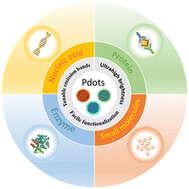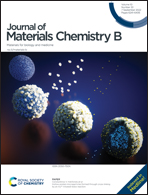Semiconducting polymer dots as fluorescent probes for in vitro biosensing
Abstract
Semiconducting polymer dots (Pdots) have emerged as novel fluorescent probes with excellent characteristics, such as ultrahigh molar extinction coefficient, easy tunable absorption and emission bands, high brightness, and excellent photostability. Combined with good biocompatibility properties, much effort has been devoted to Pdots for in vivo biological imaging and therapy applications, such as deep-tissue fluorescent imaging, photodynamic therapy, photothermal therapy, and nanocarriers of genes or chemical drugs. Many reviews have been presented in these fields. On the other hand, a large number of studies employing Pdots for in vitro biosensing applications have been reported during the past few years, and there are barely any relevant reports to summarize the progress in this area. Hence, it is necessary to review these studies to promote the comprehensive application of Pdots. Herein, we introduce the properties and functionalization of Pdots, and systematically summarize the progress in the in vitro applications of Pdots, including the detection of DNAs, microRNAs, proteins, enzymatic activity, and some biological small molecules and ions. Finally, we share our perspectives on the future direction of this field.



 Please wait while we load your content...
Please wait while we load your content...